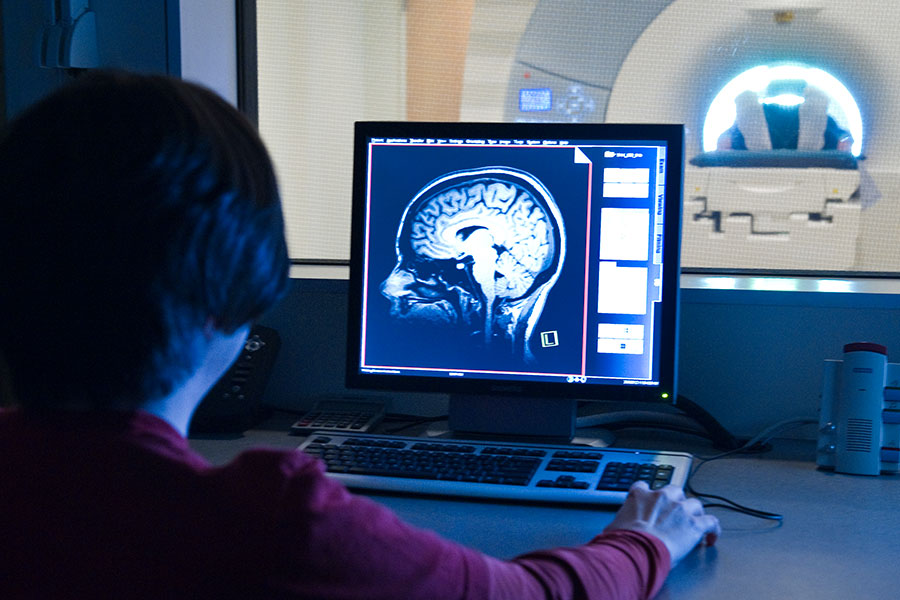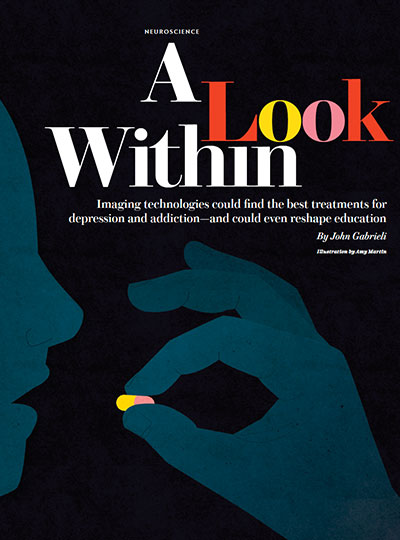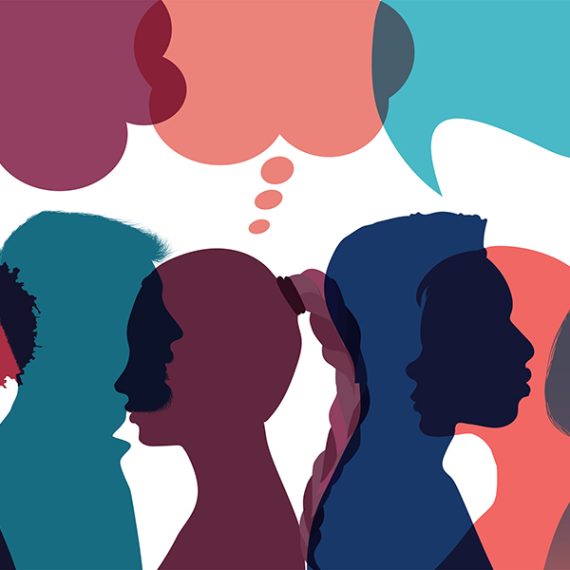Can fMRI reveal insights into addiction and treatments?
Imaging technologies have potential to diagnosis and predict brain disorders before symptoms appear.

Many debilitating conditions like depression and addiction have biological signatures hidden in the brain well before symptoms appear. What if brain scans could be used to detect these hidden signatures and determine the most optimal treatment for each individual? McGovern Investigator John Gabrieli is interested in this question and wrote about the use of imaging technologies as a predictive tool for brain disorders in a recent issue of Scientific American.

“Brain scans show promise in predicting who will benefit from a given therapy,” says Gabrieli, who is also the Grover Hermann Professor in Brain and Cognitive Sciences at MIT. “Differences in neural activity may one day tell clinicians which depression treatment will be most effective for an individual or which abstinent alcoholics will relapse.”
Gabrieli cites research which has shown that half of patients treated for alcohol abuse go back to drinking within a year of treatment, and similar reversion rates occur for stimulants such as cocaine. Failed treatments may be a source of further anxiety and stress, Gabrieli notes, so any information we can glean from the brain to pinpoint treatments or doses that would help would be highly informative.
Current treatments rely on little scientific evidence to support the length of time needed in a rehabilitation facility, he says, but “a number suggest that brain measures might foresee who will succeed in abstaining after treatment has ended.”
Further data is needed to support this idea, but Gabrieli’s Scientific American piece makes the case that the use of such a technology may be promising for a range of addiction treatments including abuse of alcohol, nicotine, and illicit drugs.
Gabrieli also believes brain imaging has the potential to reshape education. For example, educational interventions targeting dyslexia might be more effective if personalized to specific differences in the brain that point to the source of the learning gap.
But for the prediction sciences to move forward in mental health and education, he concludes, the research community must design further rigorous studies to examine these important questions.




